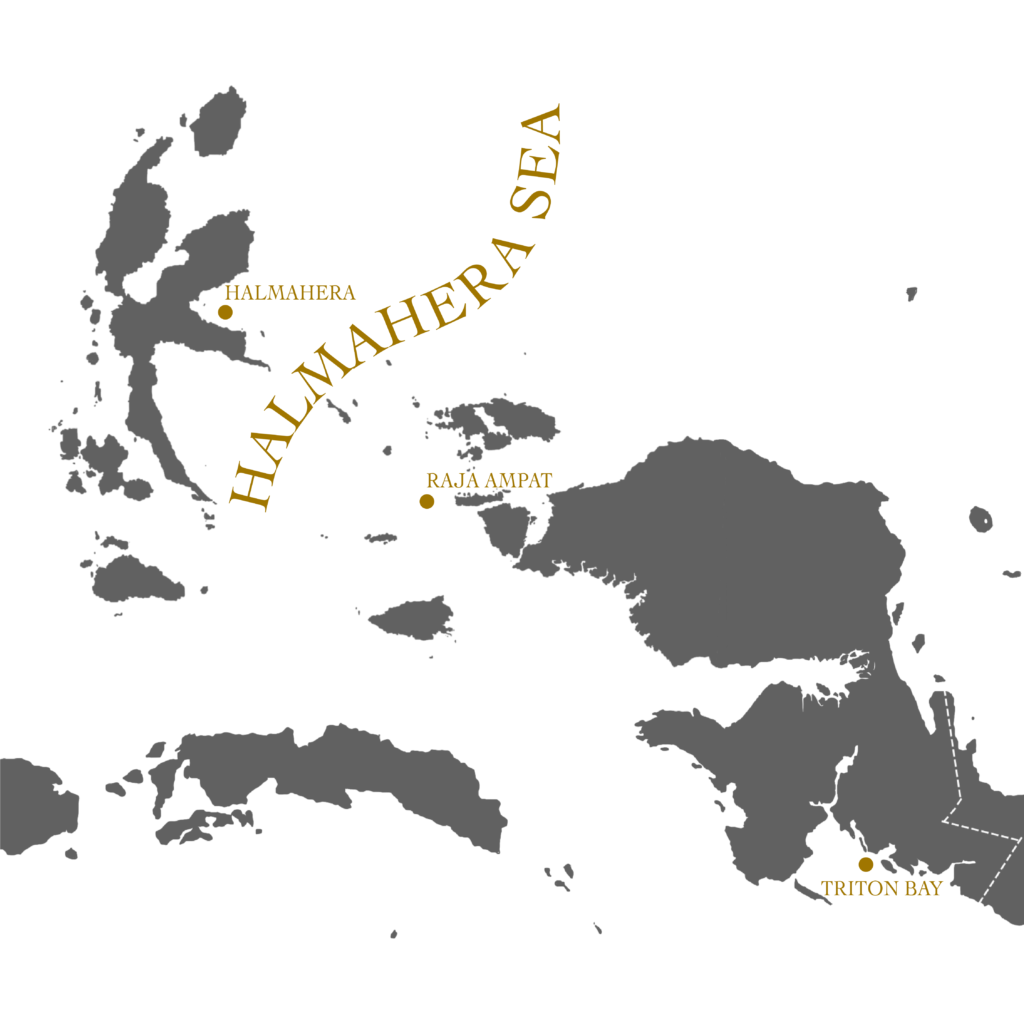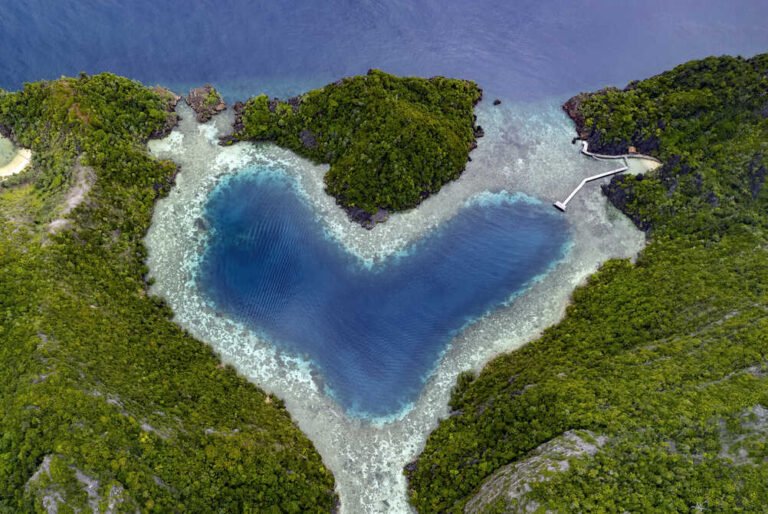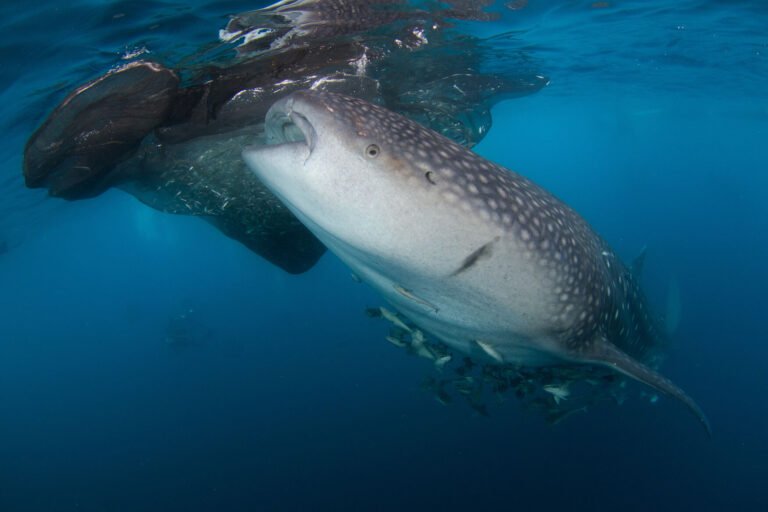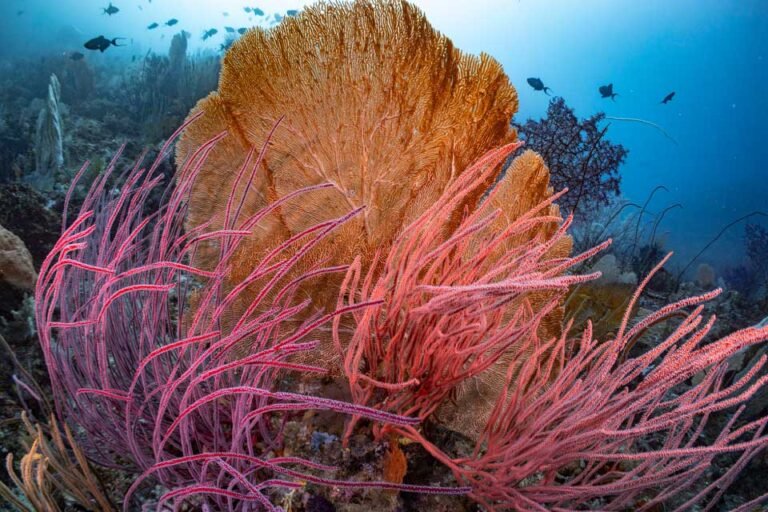Explore the Wonders of Halmahera Sea
Discover the Beauty of the Hidden Gem of Indonesia

Where is Halmahera Sea
The Halmahera Sea, a hidden gem in the Moluccas, Indonesia, offers divers a pristine underwater sanctuary teeming with life. Its rich coral reefs harbor over 800 fish species and 450 coral types, while macro enthusiasts can delight in spotting pygmy seahorses and blue-ringed octopuses. Large marine life such as turtles and manta rays grace the waters, and unique species like the walking shark, Hemiscyllium halmahera, can be found here. With optimal diving conditions from October to May, the southwestern dive sites around Bacan and Ternate islands are particularly noteworthy for their biodiversity and photographic opportunities, making the Halmahera Sea an ideal destination for experienced divers seeking unspoiled beauty and rich marine encounters.
What to see in Halmahera Sea


The waters around this sparsely populated island play host to pristine, untouched reefs and an astounding biodiversity. While the waters are still relatively unchartered, a survey in 2005 suggested that Halmahera is comparable only to Raja Ampat – currently considered the most diverse habitat on earth – with at least 450 species of coral and over 800 species of fish recorded in just a few hours.
The wider region, much of which is still to be explored, boasts almost 400 islands, plunging drop-offs, atolls, pinnacles and vibrant coral gardens hiding countless macro delights such as the pygmy seahorse, blue-ringed octopus and flamboyant cuttlefish.
Larger visitors include turtles, schools of barracuda and batfish, eagle rays, bumphead parrotfish and graceful manta rays (Sep-Oct), and a new species of walking shark has been discovered in the region (hemiscyllium halmahera).

RAJA AMPAT
Diving in Raja Ampat is characterized by its mind-blowing diversity, featuring a plethora of medium to large size fish, good macro, & fantastic hard & soft coral reefs, along with some muck & mangrove sites. The water temperatures hover at around 31°C (89°F) year-round – so warm that a wetsuit is hardly required. The archipelago’s topside scenery is also stunning.
Raja Ampat is located in the province of West Papua (formerly known as Irian Jaya) in Indonesia. It is situated in the heart of Indo-Pacific’s Coral Triangle which is home to the richest marine diversity in the world & hence some of the best scuba diving in the world.
The word Raja Ampat means “Four Kings” in the Indonesian language, & this refers to its 4 main islands – Waigeo, Batanta, Salawati, & Misool. There is another smaller island, Kofiau, & over 1,500 small islands & cays which form the entire Raja Ampat archipelago.
HALMAHERA
Once a focus of the global spice trade, Halmahera & the other islands of North Maluku have since faded into obscurity, in part because of their isolation. & despite the islands’ location in the heart of the Coral Triangle & at the gateway to the Indonesian Throughflow, these islands remain largely overlooked by even the most seasoned divers. But today, with scuba diving & other tourism beginning to emerge, Halmahera & its neighbouring islands, i.e. Ternate and Moratai, represent Indonesia’s newest thrilling frontier for adventurous divers – complete with exciting pelagic action & world-class macro & WWII wrecks.
Diving in Halmahera, Indonesia, offers an exceptional opportunity to explore some of the world’s richest marine biodiversity. Located in the heart of the Coral Triangle, Halmahera boasts pristine reefs, vibrant coral gardens, and an array of marine life. Halmahera is home to a diverse range of marine species including colorful reef fish, sharks, rays, turtles, and an abundance of macro life.
TRITON BAY
In 2008 Kaimana Regency declared a 6000 sq. km Marine Protected Area around the waters of Kaimana & Triton Bay. The marine biodiversity here is considered the best in the world. Dubbed by some as “the next frontier of Indonesian diving” & the “last best place”, Triton Bay offers something for everyone both above & below the waves. Best of all you will be one of only a few divers enjoying the waters in this very remote area.
Dive sites range from pinnacles to shallow soft coral gardens, huge boulders draped in colourful corals, massive black coral bushes, drift & wall dives, as well as the opportunity for critter hunting. Triton Bay is becoming best known for its beautiful soft coral gardens. Diving in Triton bay is best in the months of January & February.
